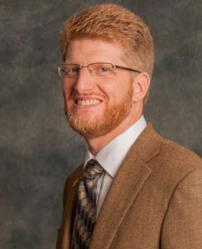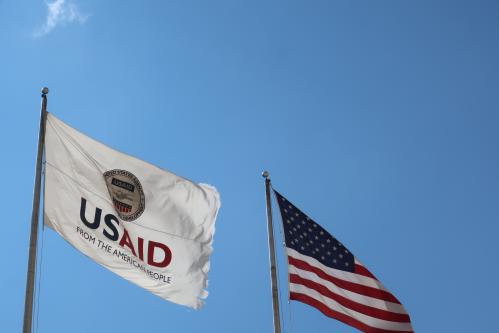More than a decade ago, the efforts of the Centers for Disease Control (CDC) to directly fund its local implementers accelerated substantially, showing that localization could be successfully implemented within the rules and constraints of the U.S. government. At the same time, the U.S. Agency for International Development (USAID)’s localization initiative failed to move the needle, with direct funding to local entities at 4.2% in 2012 and merely 4.4% in 2018. USAID’s troubles with localization were so systemic at the time that, according to an article earlier this year by former senior U.S. officials, the Agency “declined to adopt” an approach shifting its resources to local organizations, “despite agreeing to the policy by signing the agreement” with the State Department’s Office of the Global AIDS Coordinator, better known as PEPFAR.
US implementers transferred leadership to local orgs in just four years
By contrast, the CDC followed its PEPFAR agreement to advance localization, transforming grants with U.S. implementers into “terminal transition awards,” mandating that the American organizations would have just four years to transfer full responsibility for all activities to local entities “without any drop off in the quality or coverage of services” to the population. As a result, PEPFAR’s budget flowing directly through the CDC to local organizations and governments reached fully 67% by 2012!
This was a result of CDC transitioning its Antiretroviral Therapy programs in 13 countries from U.S.-based organizations and grantees to Ministries of Health and indigenous organizations. Critically, studies found that program service delivery by those local entities was comparable to that of its U.S. partners, demonstrating 11 years ago that localization could be achieved while delivering results and safeguarding taxpayer dollars. Based on this success, PEPFAR went on to set and largely achieve a goal that a whopping 70% of its funding would be awarded directly to local organizations and governments.
With this in mind, it must be satisfying for USAID staff to see their own in-house localization model finally emerging with direct local funding increasing to more than 10% in FY22. Of course, this shift would need to accelerate considerably to meet or even get close to Administrator Samantha Power’s goal of 25% local funding by 2025; however, there now seems to be a path that Bureaus and Missions across USAID could follow to fulfill that commitment. It builds on the PEPFAR-CDC model and USAID’s ongoing procurement and staffing reforms.
USAID’s direct local funding for HIV/AIDS programs jumped 81% in just four years
Two recent peer-reviewed journal articles by USAID document that between FY18 and FY22, USAID’s PEPFAR-funded HIV/AIDS programs expanded annual direct funding “to local partners by $345 million, or an 81% increase.” The data shows that this major expansion was accomplished incrementally across the Missions. For example, local direct funding rose from $452 million in FY18 to $600 million in FY20 to $797 million in FY22. Thus, the 81% increase was accomplished through steady, widespread, and manageable progress. It should be noted here that third-party assessments of USAID localization data have raised doubts, both in terms of methodology and the inclusion of some international organizations. Still, it seems clear that the increases were rapid and significant. This sharp jump also gains credibility from the fact that it replicated the increases achieved by the CDC in the 2010s.
The USAID authors stressed that to qualify as local, partners had to be “locally incorporated, registered, and have a majority of local staff, including at senior levels,” so their local partners would all qualify as local entities under USAID’s current definition. They added that based on the available program assessments, local partners again “displayed quality of service comparable to international partners.” So, after struggling for years to move the needle at all, how was USAID’s HIV/AIDS team able to achieve an 81% jump in just four years? The authors cite six aspects of USAID’s emerging localization model. None of these seem to be exclusive to HIV programming, suggesting they could be widely adopted across the Global Health Bureau and the Agency.
Six key factors made it possible
- An ambitious goal (PEPFAR’s 70% local funding commitment) resulting in country-specific strategies that include local funding targets based on the Missions’ specific context and procurement plans.
- Strong data systems to monitor progress toward both the direct local funding target and the program performance of the local partners.
- Strengthening local partner organizational and financial capacity. Critically, the capacity strengthening efforts have short timelines and focus on preparing the local partners to become prime awardees, as in terminal transition awards. This may not completely align with USAID’s new Local Capacity Strengthening approach.
- Bolstering USAID’s capacity to manage local awards. As noted in a blog last year, this point recognizes that USAID sometimes lacks the capacity in its operating systems and organizational culture to work with local organizations, and must accept responsibility for improving. In the case of USAID’s HIV programs, 98 new positions (funded by PEPFAR) were approved across 16 Missions. These included new staff in Global Health as well as Acquisition and Assistance and Financial Management. Some Missions also hired a local transition or local capacity adviser. Therefore, current requests by Missions and Bureaus for similar positions should be prioritized.
- Changing the way USAID does business, including expedited procurement approaches and building a wider network of local partners through personal and online outreach and by convening local partner conferences.
- USAID leadership at headquarters and within country teams made transitioning to local partners a top priority.
Model is transferable to other bureaus
As to whether these results were replicable beyond HIV programs, then Acting Administrator for Global Health, Jennifer Adams, wrote that USAID HIV had developed the “largest local partner funding footprint’ across any Agency program with “significant experience and lessons learned” to share with their colleagues within the Global Health Bureau and through the Agency about successful direct partnerships with local organizations. Reflecting on the same results, USAID’s former Chief of Staff testified before Congress this year that the experience was widely applicable, asserting that “every large” cooperative agreement and contract should include “mandatory Transition Awards to local organizations/local entities for the vast majority of the substantive work by the end of the period of performance.”
Key reforms in A&A staffing and partnering
The second set of breakthroughs at the heart of USAID’s emerging localization model have been reform to its Acquisition and Assistance (A&A) practices and staffing. This builds from recognition in Congress and the Front Office that USAID’s business practices are perhaps the single largest barrier to advancing locally-led development. To address these issues and improve aid effectiveness, USAID’s new Acquisition and Assistance (A&A) strategy was launched six months ago. It sets out a path to achieve the 25% local funding goal, expand and equip the A&A workforce, and acquire a more diverse set of partners for locally-led development solutions.
One key personnel innovation was to recognize USAID’s local staff as an overlooked resource. The new A&A strategy explicitly recognizes that the local Contracting Officer corps is underutilized with just 10% having warrants to obligate and manage funds on behalf of the U.S. government. After years of ‘slow walking’ the idea, USAID has again made rapid progress, moving from 19 local staff with these administrative warrants in FY22 to 40 now, exceeding its ambitious target of doubling the number in just one year. This shows that there are many well-qualified local staff as well as pent-up demand, so hopefully USAID will continue to expand their ranks in FY24.
A key effort to expand USAID’s local partner base is a new public-facing A&A website, WorkwithUsaid.org. WorkwithUSAID.org helps introduce USAID to prospective partners in civil society and has seen a good amount of traffic and engagement, with more than 5,000 organizations registered, over 60% of which are considered local entities.
Another important shift in the A&A strategy is the effort to improve local partners’ ability to recover their costs of winning and implementing awards. The current “de minimus” overhead recovery rate of just 10% underfunds the core and proposal-writing expenses of local entities. When compared to the 20-40% overhead rates received by USAID’s traditional implementers through NICRA, the current 10% rate emerges as a glaring disadvantage and disincentive for local partners to accept the risk of working with USAID. Thankfully, new draft guidance from OMB has opened the door to raising the “de minimus” overhead rate to 15%. Finalization of this rule would allow USAID to more fairly compensate its local partners and break what has been called the “starvation cycle,” of unrecovered overhead costs by local entities.
Successful localization at CDC and USAID HIV have blazed a trail
The rapid growth of direct funding to local entities by the CDC’s PEPFAR-funded programs a decade ago and by USAID’s PEPFAR-funded HIV programs more recently demonstrate that USAID can still reach or get close to the 25% direct local funding target by FY25. One key aspect would be the adoption of this internal USAID model by other technical sectors. That would be aided by the innovations of the A&A strategy, facilitating changes to USAID’s business practices while also reducing the costs for local entities to become its partners. It’s now fair to say that the localization trail has been blazed with PEPFAR, CDC, and USAID HIV as its pioneers. It’s reasonable for localization’s bipartisan supporters in Congress to expect other parts of USAID to adopt similar approaches.







Commentary
A USAID localization model finally emerges
October 6, 2023